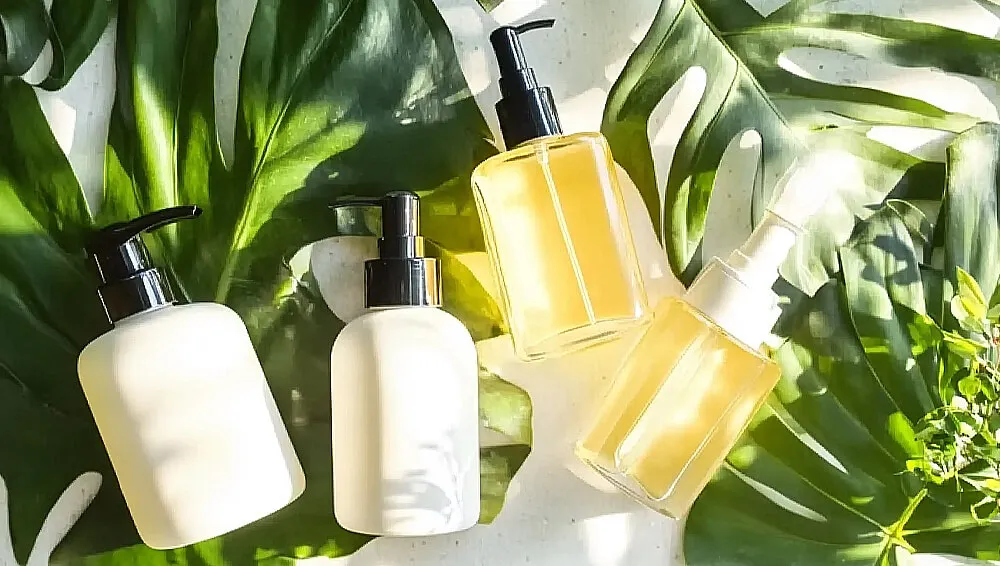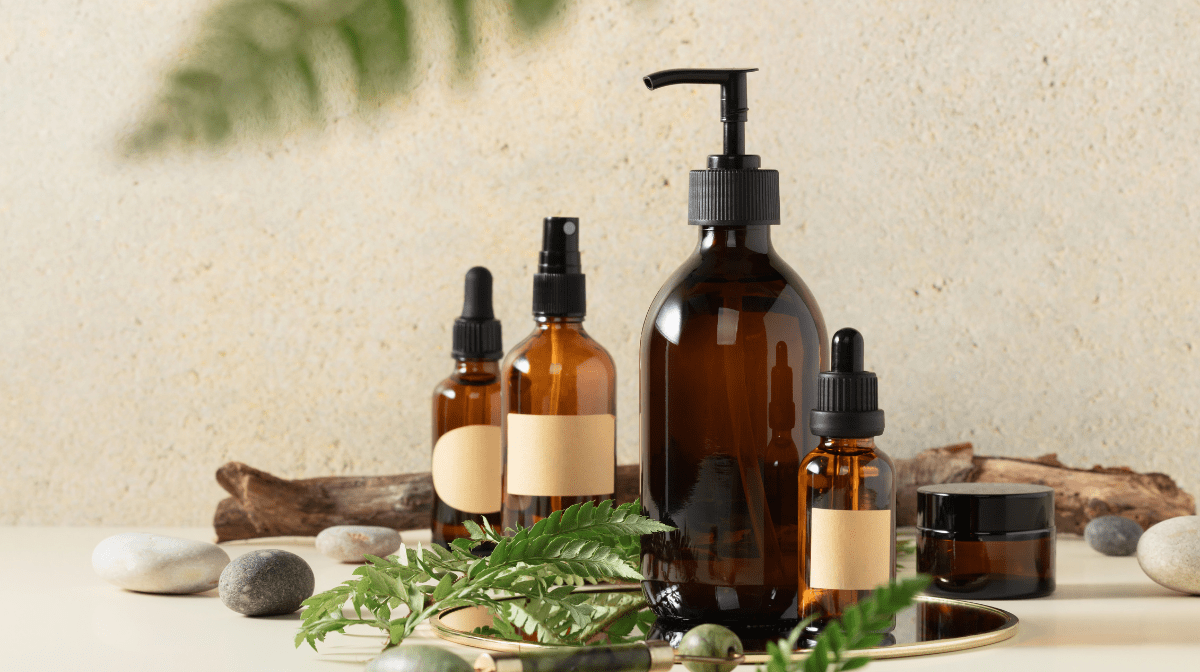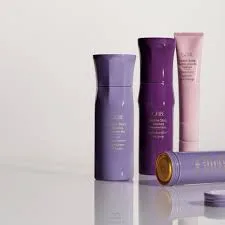News
Sustainable Beauty 2025: Eco-Friendly Products, Practices, and the Future of Conscious Self-Care
Part 1: The Rise of Sustainable Beauty
Introduction: Why Sustainable Beauty Matters Now
Walk into any beauty store today and you’ll notice something different compared to a decade ago. Alongside the glamorous packaging, sparkling palettes, and luxurious creams, you’ll see labels proudly declaring “vegan,” “cruelty-free,” “recyclable,” or “sustainably sourced.” The beauty industry is in the middle of a green revolution, driven not only by innovation but by necessity. Climate change is no longer a distant threat—it is reshaping how we live, consume, and even how we beautify ourselves.
The global cosmetics industry has historically been associated with excess. Glitter-packed packaging, plastic-heavy containers, and single-use samples have generated millions of tons of waste annually. Add to that the carbon footprint of global shipping and production, and it’s clear why sustainability has become one of the industry’s hottest—and most urgent—topics. Consumers, particularly younger generations, are demanding more from the brands they support. They want beauty products that not only make them look good but also feel good—because they align with their values.
This is the essence of sustainable beauty: products and practices that minimize harm to the planet, respect ethical sourcing, and create a cycle of care that extends beyond skin and hair into the ecosystems that support all life.
The Evolution of Green Beauty
The concept of “green” beauty isn’t new. Long before glossy campaigns and social media hashtags, smaller niche brands pioneered natural, organic, and cruelty-free formulas. What started as a movement embraced by eco-conscious consumers on the margins has now gone mainstream, with multinational corporations investing billions in sustainability initiatives.
In the early 2000s, words like “paraben-free” and “sulfate-free” were relatively obscure outside of niche health circles. Today, they’re common knowledge—even casual consumers look for them on ingredient lists. Certification programs such as ECOCERT and COSMOS standardized organic and natural beauty claims, while organizations like Leaping Bunny and PETA’s Beauty Without Bunnies made cruelty-free cosmetics easier to identify.
Social media accelerated this evolution. Influencers and activists shone a spotlight on unsustainable practices, from palm oil deforestation to excessive packaging waste. Viral campaigns pushed brands to switch gears and respond to consumer pressure. Sustainability, once a “nice-to-have,” became a must-have for survival in a hyper-transparent digital age.
By 2025, the “green beauty” movement has matured into what we now call “sustainable beauty”—a holistic approach that encompasses everything from ingredient sourcing and product formulation to packaging, distribution, and after-use disposal.

Eco-Friendly Ingredients
At the heart of sustainable beauty is the question: What goes into our products?
Traditional cosmetics often rely on synthetic chemicals, petrochemical derivatives, and environmentally damaging raw materials. While some synthetics are safe and effective, others come with heavy environmental costs. For example, microplastics—once used for exfoliation—have been banned in many countries due to their devastating impact on marine ecosystems. Similarly, palm oil, while inexpensive and versatile, has been linked to deforestation and biodiversity loss when harvested unsustainably.
Sustainable beauty seeks alternatives that are gentle on both skin and planet. Key approaches include:
Plant-Based Ingredients: Botanicals like aloe vera, shea butter, and jojoba oil remain staples, but innovation has led to more advanced uses of natural actives such as bakuchiol (a plant-based alternative to retinol) and moringa oil.
Biotechnology in Beauty: Lab-grown actives are booming. Instead of harvesting rare plants, scientists can now grow identical compounds in controlled environments, reducing strain on natural ecosystems. For instance, lab-cultured squalane offers the moisturizing benefits of shark-derived squalene—without harming marine life.
Fair-Trade and Ethical Sourcing: Beyond the ingredient itself, the process matters. Cocoa butter, argan oil, and vanilla sourced through fair-trade initiatives not only protect biodiversity but also empower farming communities worldwide.
Biodegradable Formulas: Shampoos, soaps, and scrubs that dissolve without leaving harmful residues reduce pollution in waterways. This matters in a world where billions of gallons of beauty products wash down our drains each year.
The sustainable ingredient revolution proves that we don’t have to choose between efficacy and ethics. Science and nature can work hand in hand to create products that deliver results while protecting the planet.
Packaging Innovations
If ingredients are the soul of sustainable beauty, then packaging is its face—and it’s often the most visible (and problematic) part of the industry. The global cosmetics sector produces an estimated 120 billion units of packaging annually, much of which ends up in landfills or oceans. Traditional plastic bottles, tubes, and wrappers take hundreds of years to degrade, if at all.
In response, beauty brands are reimagining packaging in bold and creative ways:
Refillable Systems: From luxury compacts to everyday shampoos, refill stations and cartridges are becoming mainstream. This simple switch reduces single-use waste dramatically.
Compostable and Biodegradable Materials: Some brands are experimenting with plant-based plastics, paper tubes, and mushroom-derived packaging that decompose naturally.
Aluminum and Glass Alternatives: These materials are infinitely recyclable and durable, making them ideal for packaging foundations, serums, and perfumes.
Minimalist Design: By stripping away unnecessary layers—plastic wraps, cardboard inserts, oversized boxes—companies not only cut costs but also reduce waste.
Interestingly, indie brands often lead the charge with packaging innovation, unencumbered by the inertia of legacy systems. However, major players are catching up quickly, pledging to make all packaging recyclable, reusable, or compostable within the next decade.
Sustainable Beauty Brands Leading the Way
No movement thrives without pioneers. Across the globe, beauty brands of all sizes are proving that sustainability can be both ethical and profitable.
Lush Cosmetics has long been a leader in “naked” packaging, offering solid shampoo bars, bath bombs, and skincare without any external wrapping. Their commitment to fresh, handmade products redefined what eco-conscious beauty could look like.
RMS Beauty focuses on raw, food-grade organic ingredients, packaged in recyclable glass jars with aluminum lids. Their philosophy emphasizes purity, simplicity, and transparency.
Aveda integrates sustainability into every layer of its business, from using wind power in manufacturing to adopting 100% post-consumer recycled PET bottles.
Biossance popularized sugarcane-derived squalane, setting a gold standard for biotech-driven sustainability in skincare.
Indie Brands like Ethique and Meow Meow Tweet are proving that consumers are willing to embrace bars, concentrates, and unconventional packaging when values align with products.
Transparency is the key differentiator. Brands that openly share sourcing practices, environmental goals, and measurable progress stand out in a market wary of “greenwashing.”
Conclusion of Part 1
The rise of sustainable beauty is not a passing fad—it is the future of the industry. What began as a niche demand from eco-conscious consumers has evolved into a mainstream expectation, reshaping everything from formulas and packaging to distribution models. In 2025, sustainability is no longer about compromise; it’s about innovation, creativity, and responsibility.
Part 1 has explored the origins, evolution, and current state of sustainable beauty—laying the foundation for a deeper dive. In Part 2, we’ll turn to the practical side: how individuals can embrace eco-friendly practices, avoid greenwashing, and build routines that balance personal care with planetary care.

Building a Sustainable Beauty Routine
Creating a sustainable beauty routine doesn’t mean giving up all your favorite products overnight. Instead, it’s about making gradual, thoughtful choices that align with your values and lifestyle. Small shifts can have a surprisingly large impact over time.
Start by assessing what you already own. Do you have ten half-empty bottles of face cream? Three nearly identical mascaras? A pile of plastic sample packets gathering dust in a drawer? One of the biggest sustainability lessons is use what you have first. The most eco-friendly product is often the one you already own, because tossing it prematurely contributes to waste.
When it’s time to restock, approach shopping with a more mindful lens:
Look for multi-functional products. A tinted moisturizer with SPF reduces the need for separate sunscreen, foundation, and moisturizer. A lip-and-cheek tint eliminates two extra items in your bag.
Consider longevity. Solid shampoo bars and concentrated serums last longer than liquid alternatives, reducing packaging and the frequency of repurchases.
Choose brands with transparent values. Certifications and brand reports offer insight into sustainability practices.
Adopt a minimalist philosophy. Instead of hoarding, curate a capsule collection of products that you genuinely love and use daily.
This approach fosters a routine that feels intentional rather than excessive, giving both your vanity and the planet some breathing room.
DIY and Low-Waste Practices
One of the most empowering ways to embrace sustainable beauty is to experiment with DIY solutions. Simple, natural ingredients often found in your kitchen can double as skincare staples:
Sugar or coffee grounds mixed with coconut oil create an effective body scrub.
Honey and oatmeal serve as a soothing mask for sensitive skin.
Aloe vera gel fresh from the plant calms sunburns and hydrates dry patches.
These recipes minimize packaging waste, cost less, and allow you to know exactly what goes onto your skin. Of course, DIY isn’t for everyone—some prefer the precision and stability of lab-tested formulas—but even incorporating one homemade product into your routine reduces dependency on mass-produced goods.
Another low-waste practice is switching to reusable tools. Makeup remover pads, silicone sheet masks, and bamboo cotton swabs can replace hundreds of disposable versions. Safety razors, though old-fashioned, provide a lifetime of use compared to endless plastic cartridges.
When traveling, bar products are especially convenient: shampoo bars, conditioner bars, and solid cleansers skip the plastic bottles entirely and meet TSA liquid restrictions with ease.
Consumer Power: Voting With Your Wallet
Every purchase you make is a vote for the kind of world you want. In the beauty industry, consumer demand has already driven enormous change—from the widespread ban of microbeads to the global shift toward cruelty-free testing.
As a conscious consumer, you can amplify your impact by:
Learning certifications. Look for trusted seals like:
Leaping Bunny (cruelty-free)
Fair Trade Certified (ethical sourcing)
ECOCERT/COSMOS (organic/natural standards)
Forest Stewardship Council (FSC) (sustainable paper/wood packaging)
Supporting local and indie brands. Smaller companies often innovate faster and commit to sustainable practices more authentically.
Asking questions. Brands notice when customers request eco-friendly refills, ask about supply chains, or demand transparency.
Spending mindfully. Instead of impulse shopping, channel your budget toward fewer, higher-quality items that align with your values.
The ripple effect is real. If enough people demand sustainable mascara tubes or refillable foundation compacts, companies respond. This collective pressure is one of the most powerful drivers of industry-wide transformation.
Challenges and Greenwashing
Of course, the road to sustainable beauty isn’t smooth. One of the biggest challenges is greenwashing—when companies exaggerate or fabricate eco-friendly claims to attract conscious consumers. A product may feature leafy graphics, earthy tones, or words like “natural,” yet still contain unsustainable ingredients or excessive plastic packaging.
To protect yourself from greenwashing, practice critical evaluation:
Read ingredient lists. If a product boasts “made with organic botanicals” but they appear at the bottom of the list, the concentration may be negligible.
Check certifications. Third-party seals provide accountability, while vague marketing phrases like “eco-friendly” without evidence are red flags.
Examine packaging. A recyclable bottle wrapped in three layers of plastic isn’t sustainable.
Research brand behavior. Does the company publish sustainability reports or set measurable goals? Or do they rely solely on advertising buzzwords?
Another challenge is balancing performance with sustainability. Some consumers worry that eco-friendly products won’t deliver the same results as conventional ones. Thankfully, innovation is closing this gap quickly. Biotech ingredients, refillable designs, and waterless formulations now rival or even outperform traditional cosmetics.
Still, it’s important to recognize that perfection isn’t always possible. The goal is progress, not purity. Even small, imperfect steps matter when taken collectively.
The Future of Sustainable Beauty
Looking ahead, the future of sustainable beauty is both exciting and ambitious. Here are some of the innovations shaping the next era:
Waterless Beauty: Powders, balms, and concentrated formulas reduce water use during production and packaging. They also weigh less, lowering shipping emissions.
Lab-Grown Ingredients: From collagen to plant actives, biotechnology eliminates overharvesting and offers precise, scalable alternatives.
Personalized Products: Custom formulations reduce waste by ensuring consumers buy only what works for them, avoiding trial-and-error clutter.
Circular Economy Models: Imagine returning empty containers to be sterilized and refilled, or subscribing to products on a closed-loop basis. This model minimizes waste while building brand loyalty.
Smart Technology Integration: Devices that analyze skin condition and dispense exactly the right amount of product could cut down on excess use.
Beyond technology, the cultural shift matters just as much. Younger generations see sustainability not as a bonus but as a baseline. As awareness deepens, beauty becomes less about disposable glamour and more about conscious care—care for yourself, your community, and the planet.
Community and Collective Impact
Sustainable beauty is not just about what happens in your bathroom cabinet. It’s also about the wider community you’re part of. Movements thrive when individuals come together, share knowledge, and amplify impact.
Online forums, eco-conscious influencers, and grassroots organizations have become powerful tools for education. Communities on social media exchange DIY recipes, review sustainable swaps, and hold brands accountable when their practices fall short. When people unite, it’s easier to demand systemic change from governments, manufacturers, and retailers.
For example, grassroots campaigns against animal testing gained global traction in the 2010s, culminating in the European Union’s ban on cosmetic animal testing. More recently, consumer-led petitions have pressured companies into adopting refillable systems or eliminating single-use plastics. These victories prove that change is possible when voices are collective.
In 2025 and beyond, community-driven initiatives such as neighborhood refill stations, zero-waste beauty co-ops, and local sustainability workshops will likely flourish. These spaces not only reduce environmental impact but also foster connection and shared responsibility.
Global Shifts in Sustainable Beauty Consumption
Beauty is universal, but sustainability plays out differently across cultures and regions. By examining global trends, we see how diverse approaches collectively shape the industry:
Europe: Long a leader in regulatory action, Europe continues to set high standards for ingredient safety and sustainability. EU bans on harmful chemicals and microplastics push companies to innovate responsibly.
Asia: In regions like South Korea and Japan, technological innovation drives eco-beauty, with advances in biotech actives and refill culture. Meanwhile, traditional herbal practices inspire natural product lines.
North America: The U.S. and Canada emphasize consumer activism, with grassroots demand pushing for cruelty-free, clean formulations. Indie brands flourish in this ecosystem.
Africa and South America: These regions are increasingly recognized for their biodiversity and ethical sourcing opportunities. Ingredients like marula oil, cupuaçu butter, and andiroba seed oil gain global popularity while supporting local economies.
This diversity underscores that sustainability isn’t one-size-fits-all. Each region contributes uniquely, yet together they advance a shared vision: beauty that doesn’t come at the planet’s expense.
Personal Benefits of Sustainable Beauty
While much of the conversation emphasizes environmental impact, sustainable beauty also offers direct personal benefits. Choosing eco-friendly products often means choosing formulations that are:
Gentler on skin. Fewer harsh chemicals reduce irritation, making products ideal for sensitive or allergy-prone users.
Higher in active botanicals. Natural oils, plant extracts, and biotech actives nourish and protect, supporting long-term skin health.
Safer for overall wellness. Avoiding endocrine-disrupting chemicals or synthetic fragrances minimizes hidden health risks.
Emotionally rewarding. There’s a sense of pride and peace of mind in knowing your purchases align with your ethics.
In other words, sustainability doesn’t only serve the planet—it enhances your self-care experience by deepening its purpose. Your beauty ritual becomes a daily reminder that you are connected to something larger than yourself.

Case Studies: Brands and Innovations That Inspire
To illustrate how sustainable beauty takes shape, let’s look at a few inspiring examples:
Ethique (New Zealand): Known for its solid shampoo bars and zero-plastic ethos, Ethique has prevented millions of plastic bottles from entering landfills. Their products are also palm-oil free and ethically sourced.
Kjaer Weis (Denmark/USA): This luxury brand pioneered refillable metal compacts that are as stylish as they are sustainable. Customers can keep the case for years, replacing only the pan inside.
Weleda (Switzerland): With a century of history in natural cosmetics, Weleda champions biodynamic farming, fair trade sourcing, and recyclable packaging.
Davines (Italy): Their haircare line combines eco-friendly formulas with carbon-neutral production. They invest heavily in renewable energy and regenerative agriculture projects.
These case studies prove that sustainability is not a niche afterthought—it can be luxurious, innovative, and profitable. When executed authentically, eco-friendly practices enhance brand reputation, foster loyalty, and drive long-term success.
Overcoming Consumer Barriers
Despite growing enthusiasm, challenges remain for everyday consumers:
Perceived Cost: Sustainable products are often seen as more expensive. However, many last longer or replace multiple items, balancing value over time.
Accessibility: Not every community has refill stations or easy access to eco-conscious brands. Online retail and wider distribution are beginning to bridge this gap.
Confusion: With so many labels and claims, consumers may feel overwhelmed. Education—through blogs, influencers, and certifications—remains essential.
Solutions involve collective effort: brands improving transparency, governments enforcing regulations, and consumers sharing knowledge. By tackling these barriers, sustainable beauty becomes more inclusive and accessible to all.
The Call to Action: Becoming a Conscious Beauty Advocate
At the end of the day, sustainable beauty is about choices—small, repeated actions that ripple outward. Here’s how you can become an advocate in your own circle:
Start conversations. Share what you’ve learned with friends or family. Encourage them to try eco-friendly swaps.
Support authentic brands. Invest your money where it matters, rewarding companies that walk the talk.
Hold brands accountable. Ask questions on social media, write reviews, and join campaigns demanding transparency.
Celebrate progress, not perfection. Every refill, every reusable pad, every eco-friendly purchase counts.
When we align self-care with planet care, beauty transforms into something deeper: an act of love for ourselves and the Earth we call home.
Final Thoughts: A Vision for 2030 and Beyond
Imagine your beauty routine in 2030. Perhaps you refill your moisturizer at a neighborhood co-op, use a smart device that customizes formulas based on your skin’s needs, and compost the packaging of your shampoo bar in your garden. The products you use not only keep your skin glowing but also contribute to cleaner oceans, thriving forests, and empowered communities worldwide.
This is not a distant dream—it’s a trajectory already unfolding. Every sustainable choice made today nudges the industry closer to that reality. The more we demand it, the faster it becomes mainstream.
Sustainable beauty isn’t just a trend. It’s a movement, a mindset, and a moral imperative. By embracing it fully, we don’t just redefine what it means to be beautiful—we redefine what it means to be human: caring, conscious, and connected.
Conclusion: Beauty with a Purpose
Sustainable beauty isn’t about sacrificing luxury or effectiveness; it’s about reimagining beauty as a force for good. Each purchase, each choice, each daily ritual becomes an opportunity to nurture not only yourself but also the ecosystems that sustain you.
By building a thoughtful routine, embracing DIY and low-waste practices, voting with your wallet, and resisting greenwashing, you step into a movement that’s bigger than skincare or makeup. You become part of a collective effort to shift an entire industry toward responsibility, creativity, and resilience.
The future of beauty is sustainable, inclusive, and innovative. It’s a world where your moisturizer supports ethical farmers, your shampoo protects coral reefs, and your lipstick empowers women through fair-trade cooperatives. In short, it’s beauty with a purpose—proof that self-care and planet care can, and must, go hand in hand.

 Luxury Scalp Detox Treatment by Oribe in Georgia
Luxury Scalp Detox Treatment by Oribe in Georgia